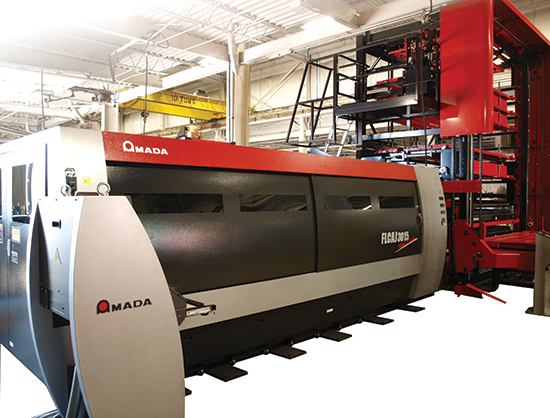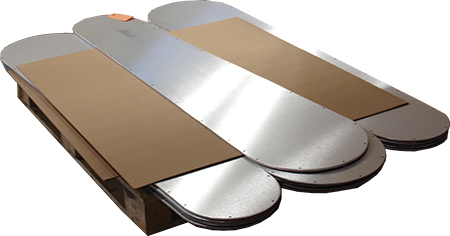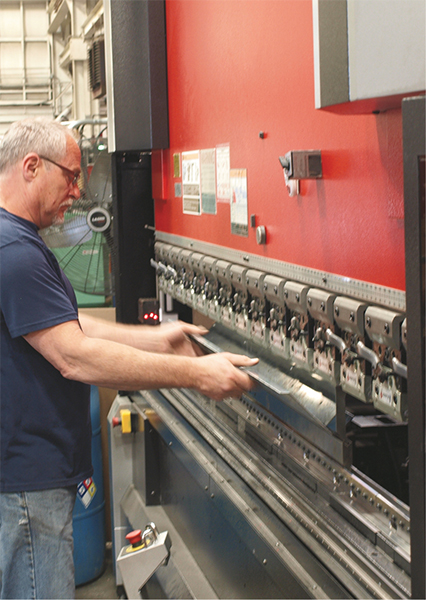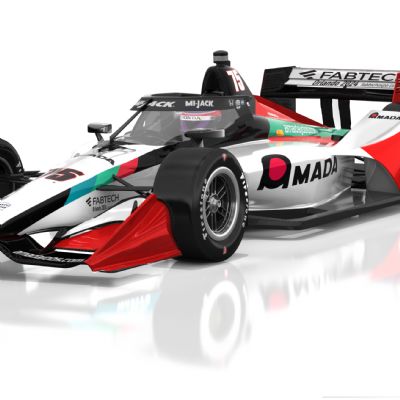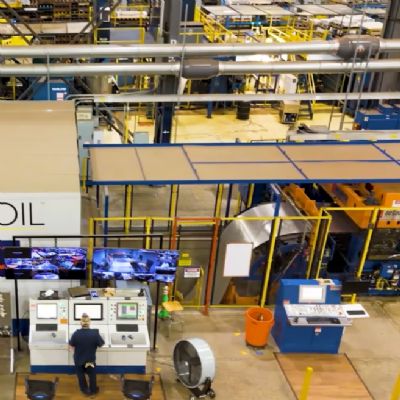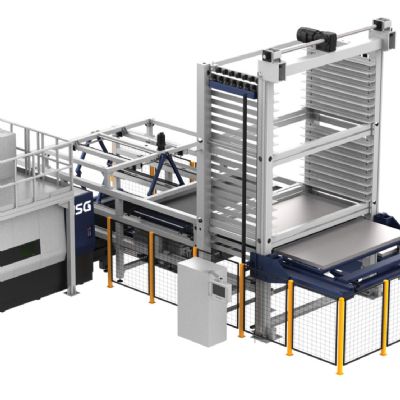A Push from Key Customers
The Weaver Fab & Finishing list of 30 to 35 customers stars five or six primary and long-term clients—“the 80-20 rule,” says Jim. Most notable are a few players in the packaging industry, including Automated Packaging Systems (machine frames, cabinets, brackets, etc.). Weaver also fabricates various sheetmetal parts for robotics company Fanuc America.
“These key customers have been a driving force behind our growth (15-percent revenue growth in 2014 and a likely 20-percent jump in 2015),” says Jim. “They’ve pushed us to become a better company in terms of quality and efficiency. And, they’ve moved us into aluminum fabrication in a big way. For example, some Fanuc parts are fabricated from ¼-in. Type 6061 Al. We’re also fabricating a lot of stainless steel for the appliance industry.”
The added variety in sheet materials and thicknesses adds even greater importance to the automated sheet tower, an Amada ASUL model.
“It changes how we buy our materials,” says Jim, “allowing us to completely restructure the front end of our company and change how we operate internally. We can work more to a just-in-time model, schedule more accurately and predictably, and minimize or even eliminate deviations from our planned production schedules.
“Predictability brings numerous additional benefits,” Jim continues. “In short, better planning leads to better execution.”
Technology Makes Good Operators Great
“Keeping pace with the new laser’s output required a significant investment in downstream press-brake bending,” she says. “As a result we added a servo-hydraulic press brake (an Amada HG 1003 model) late in 2014. It has greatly improved angular bending accuracy compared to our older brakes.”
Improved bend-angle accuracy, according to Amada officials, is due to the thickness-detection system (TDS) designed to detect the thickness of the workpiece material. The TDS automatically adjusts the entry depth of the forming tool based on sheet thickness, guaranteeing consistent and accurate bending angles.
“Our fabrication supervisor realized significant productivity right from the start with this new brake,” says Marian. “He in fact said to me, ‘This technology makes an average operator a great operator, by taking the variability out of the process.’
“For us,” she continues, “it means that we need less expertise from our operators. The brake is outperforming our older brakes by at least two to one, and as much as three to one on some parts. We get faster setups, and as close to zero scrap parts as possible. That machine is money.”
Efficiency is Endemic
Efficiency gains are clearly evident in every corner of Weaver’s new digs. There’s nothing like a fresh, greenfield approach to plant layout and design. So in addition to the gains created via automated material handling at the laser—“We ran a recent job for 38 hr. straight without human intervention,” Marian says—optimized material flow from the new plant-floor layout also brings significant gains.
In addition to laser cutting and press-brake forming, the company also performs roll bending, milling, saw cutting, arc and resistance welding, CNC punching, and powder coating.
“We suffered 18 years of frustration at the old location,” says Jim, recalling time wasted moving product from building to building. “I estimate that by bringing all operations under one roof and optimizing the equipment layout for an efficient flow of goods, we’ll pick up at least 1 hr. of productive time per employee per week. That alone will justify the move to the new facility.” MFView Glossary of Metalforming Terms
See also: Amada North America, Inc
Technologies: Cutting







